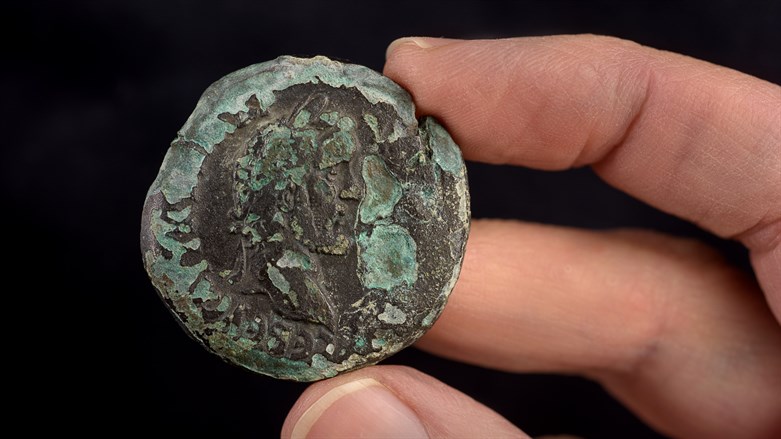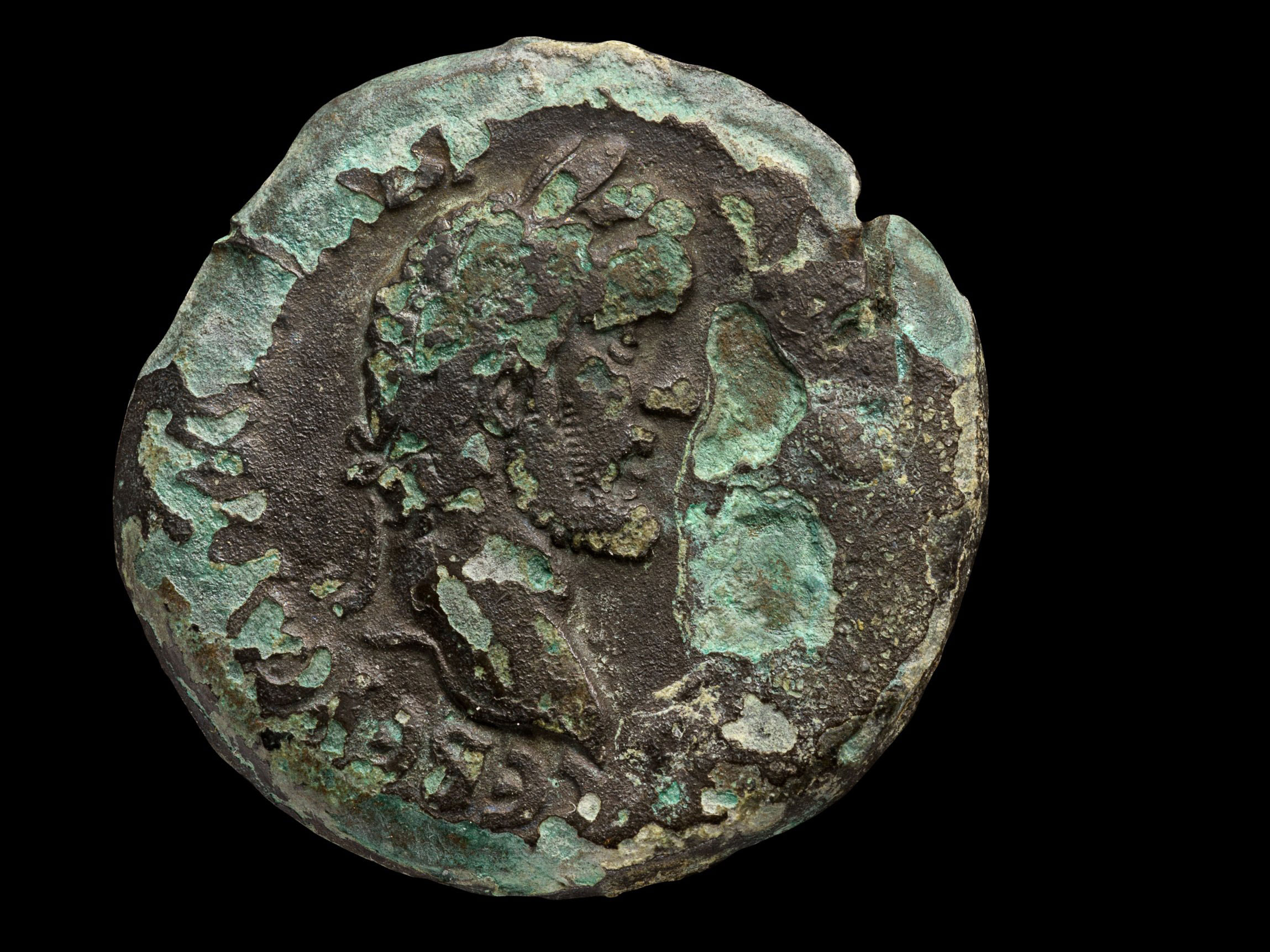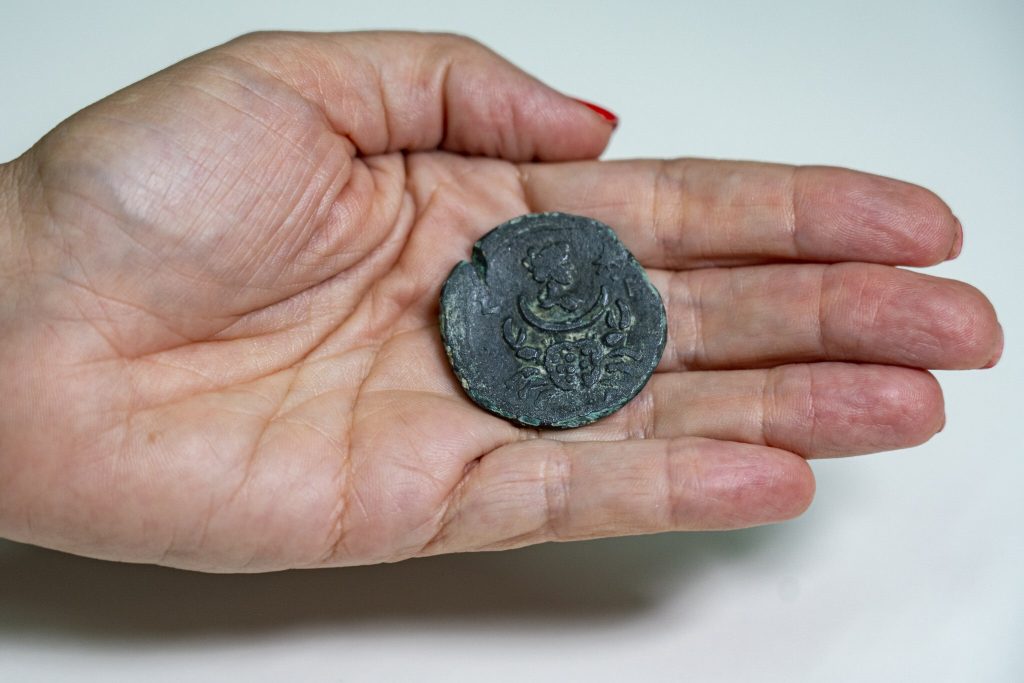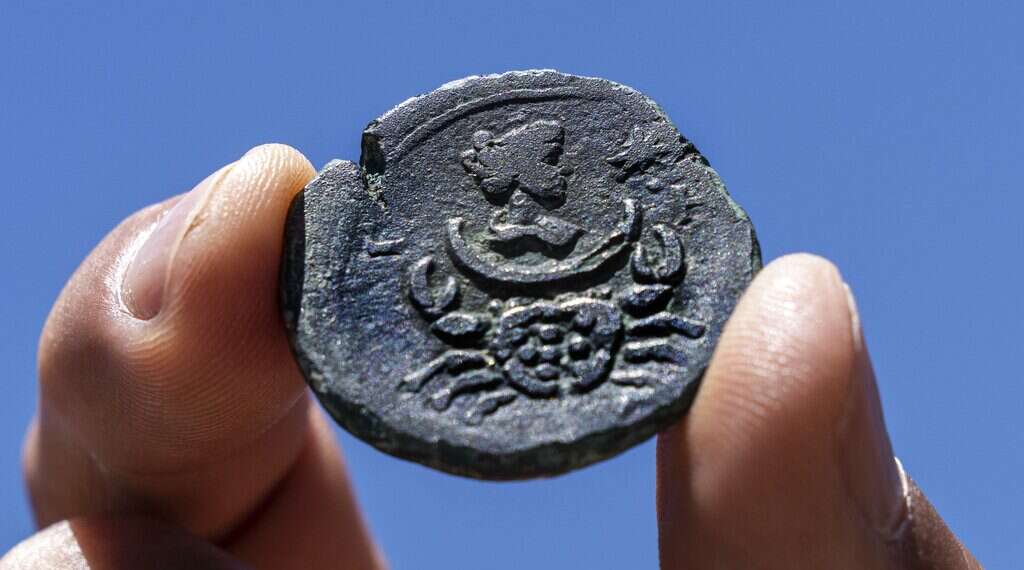A significant archaeological discovery has been made off the coast of Carmel in Haifa, Israel. An ancient Roman bronze coin, dating back approximately 1,850 years and in excellent condition, has been excavated. This coin prominently features Luna, the Roman moon goddess, and has been identified by the Israel Antiquities Authority (IAA) as a crucial addition to their collection of historical artifacts.

The Importance of the Coin
The coin was minted in Alexandria, Egypt, under the rule of Emperor Antoninus Pius from 138 to 161 CE. The design on the coin expertly portrays Luna with the zodiacal sign of Cancer in the background. It is marked with the inscription ‘Year eight,’ referring to the eighth year of Antoninus Pius’ rule, around 144/145 CE. This discovery was made by the Marine Archaeology Unit of the IAA during an initiative to safeguard historical relics from potential threats posed by coastal development. Remarkably, this coin is part of a unique series of thirteen coins, each depicting a different zodiac sign, with one additional coin representing the full zodiac wheel. It is the first discovery of its kind in the waters off Israel.

Insights into Emperor Antoninus Pius’s Era
Emperor Antoninus Pius’s reign is often celebrated as a period of peace within the Roman Empire, known as the Pax Romana. His era was marked by stability and flourishing prosperity, as Antoninus Pius was a ruler who steered clear of military conquests, instead concentrating on administrative and judicial enhancements.

During his reign, he significantly improved relations with the Jewish community, overturning the oppressive decrees of Emperor Hadrian, including the ban on circumcision, thereby allowing Jews more religious freedoms. This era was characterized by thoughtful reforms that contributed to the well-being of the empire’s diverse populations.
The Significance of the Find
Jacob Sharvit, the director of the IAA’s Maritime Archaeology Unit, underscored the unprecedented nature of this find in Israel’s Mediterranean waters. He pointed out that the Mediterranean shores of Israel have been a treasure trove of archaeological sites and artifacts, demonstrating historical ties between Mediterranean ports and adjacent countries. Sharvit emphasized that such discoveries, which have survived underwater for centuries, are remarkably well-preserved and offer vital clues about the historical interactions across the region.

Conclusion
The unearthing of this ancient Roman coin near Carmel is a profound testament to the rich and intricate history of the Mediterranean area. This artifact not only enhances our comprehension of Roman numismatics but also illuminates the governance of Emperor Antoninus Pius. As discoveries like this continue, they contribute significantly to assembling the complex mosaic of our ancient history, providing invaluable perspectives on the civilizations that once thrived in the Mediterranean basin.




